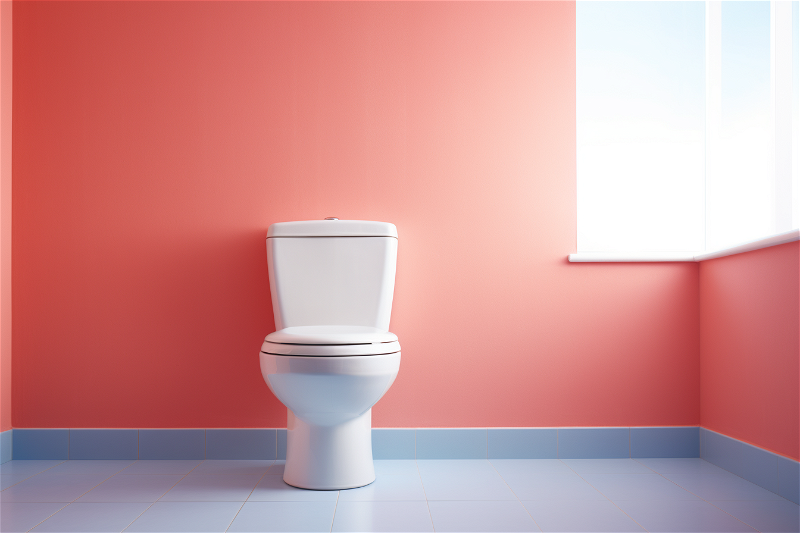
Hey there, fellow parents and teens! Welcome to my blog, where I share cleaning tips and life hacks to make your lives easier. Today, we’re going to dive into a topic that’s near and dear to my heart: organizing study spaces for teenagers. As a mom and someone who loves a tidy and efficient workspace, I understand the importance of having a well-organized study area for teens.
We all know that homework can be a source of chaos and stress, but creating a designated study space can work wonders in alleviating these issues. In this article, I’ll be sharing some practical tips and strategies to help you organize your teen’s study space effectively. Whether it’s a small corner in their bedroom or a separate study room, having a well-thought-out study area can greatly enhance concentration, focus, and overall academic performance.
Understanding the Impact of Study Spaces on Teenagers
When it comes to studying, the environment plays a crucial role in determining how effectively our minds can absorb information. For teenagers, whose brains are constantly developing and facing academic challenges, having a conducive study space becomes even more critical. Here are a few key points to consider:
Firstly, an organized study space helps promote concentration and focus. When everything is in its rightful place, there are fewer distractions to derail your teen’s attention. A clutter-free environment allows them to direct their energy towards studying, rather than constantly searching for misplaced materials.
Secondly, the psychological effects of an organized study space should not be underestimated. A clean and tidy workspace can have a positive impact on a teen’s mindset. It creates a sense of order and control, which can help reduce anxiety and increase motivation. When the study area feels calm and inviting, teens are more likely to approach their work with a positive attitude.
Lastly, a well-organized study space can significantly enhance academic performance. By having all the necessary materials easily accessible, teens can save time and effort. They won’t have to waste precious minutes searching for a pen or a textbook. Instead, they can focus on the task at hand, leading to increased productivity and better results.
Now that we understand the importance of study spaces for teenagers, let’s move on to the practical steps you can take to create an optimal study environment. In the next section, we’ll explore how to choose the right location for a study space, the significance of lighting and noise control, and the importance of ergonomic furniture. So, let’s roll up our sleeves and get ready to organize that study space!
Creating an Optimal Study Environment
Now that we understand the impact of study spaces on teenagers, let’s dive into creating an optimal study environment. Here are some key factors to consider:
Firstly, choosing the right location for a study space is essential. Ideally, it should be a quiet area away from distractions, such as the TV or high-traffic areas of the house. If possible, a separate room or a quiet corner in their bedroom can work wonders. Remember, the goal is to create a dedicated space solely for studying and learning.
Secondly, lighting and noise control play significant roles in maintaining focus. Natural light is always the best option, as it helps improve mood and productivity. Position the study area near a window or invest in a good desk lamp. Additionally, consider noise control measures such as using soundproofing curtains or white noise machines to minimize distractions.
Ergonomic furniture and comfortable seating are crucial for long study sessions. Make sure the desk and chair are at the right height to promote good posture and reduce the risk of back or neck strain. Look for adjustable chairs and desks if possible. Adding a cushion or a lumbar support pillow can also make the seating more comfortable and conducive to studying.
Lastly, personalization and inspiration can go a long way in creating an inviting study space. Encourage your teen to add personal touches such as motivational quotes, artwork, or a vision board to keep them inspired and motivated. Let their study space reflect their personality and interests, creating a space they enjoy spending time in.
Organizing Study Materials and Supplies
Once the study environment is set, it’s time to tackle the organization of study materials and supplies. Here are some tips to help keep everything in order:
Develop a system for storing and organizing textbooks, notebooks, and folders. Consider using shelves or bookcases to keep textbooks neatly displayed and easily accessible. Utilize magazine holders or file organizers for notebooks and folders. Categorize them by subject or semester to make finding specific materials a breeze.
Utilize bins, baskets, and drawer organizers for efficient storage of smaller items like pens, pencils, calculators, and markers. Label each container to ensure items are returned to their designated spots after use. This not only keeps the study space clutter-free but also saves time when searching for essential tools.
Maintain an inventory of necessary supplies. Regularly check the stock of items like paper, printer ink, and stationery. Keep a shopping list handy and replenish supplies as needed to avoid running out of essentials during crucial study periods.
Implement a labeling system for easy access and retrieval. Label shelves, drawers, and containers to clearly indicate the contents. This not only helps your teen find what they need quickly but also encourages them to put things back in their proper places.
By organizing study materials and supplies effectively, you’re setting your teen up for success. A well-organized study space ensures that everything they need is within arm’s reach, saving valuable time and reducing frustration. In the next sections, we’ll explore strategies for managing digital resources and technology, as well as time management and scheduling. So, stay tuned for more tips and tricks to create a productive study environment!
Managing Digital Resources and Technology
In today’s digital age, managing digital resources and technology is a crucial aspect of organizing a study space. Here are some strategies to help keep things in order:
Firstly, organize digital files and documents on computers and devices. Create folders and subfolders to categorize files by subject or project. Consistent naming conventions can also make it easier to locate specific files quickly. Regularly declutter and delete unnecessary files to free up storage space and maintain a streamlined digital workspace.
Secondly, utilize productivity and organizational apps for task management. There are numerous apps available that can help your teen stay organized and focused. From to-do lists and reminders to note-taking and project management apps, these tools can aid in prioritizing tasks, setting deadlines, and tracking progress. Encourage your teen to explore different apps and find the ones that work best for them.
Establish guidelines for device usage during study sessions. While technology can be a valuable learning tool, it can also be a major source of distraction. Encourage your teen to minimize distractions by silencing notifications, putting their phone on silent, or using dedicated apps that block certain websites or apps during study time. Set clear boundaries and establish designated device-free periods to promote focused studying.
Implement effective backup and synchronization methods. Losing important files or documents can be a nightmare. Encourage your teen to regularly back up their digital work using cloud storage services or external hard drives. Additionally, consider setting up synchronization across devices to ensure that files are accessible and up to date across different platforms.
Time Management and Scheduling
Managing time effectively is essential for productive study sessions. Here are some strategies to help your teen stay organized and make the most of their study time:
Create a study schedule and set realistic goals. Work with your teen to develop a study routine that aligns with their energy levels and preferences. Consider their extracurricular activities and commitments when creating the schedule. Break down larger tasks into smaller, manageable chunks, and set achievable goals for each study session.
Incorporate breaks and allocate time for different subjects. It’s important to balance study time with short breaks to prevent burnout. Encourage your teen to take breaks every hour or so, allowing them to recharge and maintain focus. Allocate specific time slots for different subjects, ensuring a well-rounded study routine.
Utilize calendars and planners to track assignments and deadlines. Help your teen keep track of assignments, projects, and upcoming exams by using a calendar or planner. Encourage them to note down due dates, exam dates, and important milestones. This visual representation of their academic commitments will help them stay organized and prioritize their workload.
Develop strategies for prioritizing tasks and managing time effectively. Teach your teen how to prioritize tasks based on urgency and importance. Encourage them to tackle the most challenging or important tasks when they are most alert and focused. Time-blocking techniques can also be helpful, where specific time slots are dedicated to specific tasks or subjects.
By implementing these time management strategies, your teen will develop essential skills for academic success. They’ll be able to manage their study time efficiently, stay organized, and meet deadlines with ease. In the next sections, we’ll explore strategies for minimizing distractions in the study space and maintaining and evaluating the study area. So, keep reading for more valuable tips!
Minimizing Distractions in the Study Space
Creating a distraction-free study space is key to maintaining focus and productivity. Here are some strategies to help minimize distractions:
Identify potential distractions and find solutions. Take a moment to assess the study space and identify any potential distractions. It could be noise from outside, siblings playing nearby, or even the temptation of social media. Once you’ve identified the distractions, brainstorm solutions. For example, you can use noise-cancelling headphones to block out external noise or establish clear boundaries with family members to minimize interruptions.
Set boundaries with family members and roommates. Communicate with your family members or roommates about your study schedule and the importance of having uninterrupted study time. Establish ground rules, such as knocking before entering the study area or keeping noise levels down during designated study hours. Respectful communication and understanding among family members can go a long way in creating a conducive study environment.
Implement strategies to minimize digital distractions. Technology can be a double-edged sword when it comes to studying. While it can provide valuable resources, it can also be a major source of distraction. Encourage your teen to turn off notifications on their devices or use apps that temporarily block access to social media and other distracting websites during study sessions. Creating a digital detox zone within the study space can help minimize the temptation to engage in non-productive online activities.
Utilize noise-cancelling headphones and white noise machines. If your teen is easily distracted by ambient noise, consider investing in noise-cancelling headphones or a white noise machine. These tools can help create a calm and focused atmosphere by drowning out background noise and providing a consistent and soothing sound.
Maintaining and Evaluating the Study Space
Organizing a study space is an ongoing process. Here are some tips for maintaining and evaluating the study area:
Regularly clean and declutter the study space. Set aside time each week to clean and declutter the study area. Remove any unnecessary items, dust surfaces, and wipe down the furniture. Keeping the study space clean and tidy will not only create a more pleasant environment but also enhance focus and productivity.
Reassess and adjust the study space as needed. As your teen’s study needs and preferences change, it’s important to reassess the study space and make necessary adjustments. This could involve rearranging furniture, adding or removing storage solutions, or updating decor. Encourage your teen to provide input and make the study space a reflection of their evolving needs and personality.
Seek feedback from the teenager on the effectiveness of the study area. Regularly check in with your teen to gather feedback on the study space. Ask them how it’s working for them, if they feel comfortable and focused, and if there are any improvements they would like to see. Their insights and suggestions can help you fine-tune the study space and ensure it aligns with their needs.
Encourage a sense of ownership and responsibility for the study space. Empower your teen to take ownership of their study space. Encourage them to maintain the organization, cleanliness, and orderliness of the area. Instilling a sense of responsibility will not only foster good habits but also promote a positive mindset towards studying and personal growth.
By implementing these strategies, you’ll create a study space that supports your teen’s learning and growth. A clean, organized, and distraction-free study environment can make a world of difference in their academic journey. Remember, the ultimate goal is to provide them with a space where they can thrive and reach their full potential.






